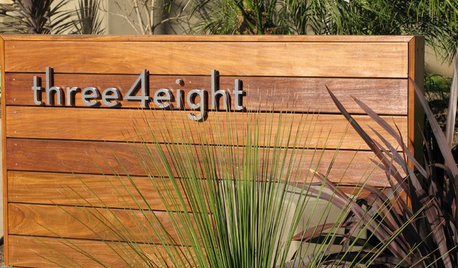Bradford Pears, No Takers
newyorkrita
21 years ago
Related Stories

GARDENING GUIDESGarden-Friendly Native Alternatives to Overplanted Exotics
There are lots of gorgeous, wildlife-friendly native plants ready to make an appearance in your garden
Full Story
FALL GARDENING11 Trees for Brilliant Fall Color
Give your landscape the quintessential look of autumn with the red, orange and yellow leaves of these standouts
Full Story
LANDSCAPE DESIGN7 Great Trees for Summer Shade and Fall Color
These landscape-pro faves straddle the seasons beautifully. Could one enhance your own yard?
Full Story
GARDENING GUIDES6 Steps to Creating Your Butterfly Garden
Encourage these fanciful winged beauties to visit your garden while helping restore their fragmented habitat
Full Story
GARDENING GUIDES10 Top Native Plants for the U.S. Southeast
For a low-maintenance and wildlife-friendly landscape, use Southern natives that withstand heat and humidity
Full Story
GARDENING GUIDESDo You Have This Invasive Plant in Your Yard?
Garlic mustard is spreading across the U.S. Here’s how to spot it and what to do
Full Story
STANDARD MEASUREMENTSThe Right Dimensions for Your Porch
Depth, width, proportion and detailing all contribute to the comfort and functionality of this transitional space
Full Story
CURB APPEAL7 Finishing Touches for a Thoughtful Front Yard
Make a great first impression with artful house numbers, water features, garden art and more
Full Story
HOLIDAYSSpend Less Without Being a Grinch: 8 Holiday Ideas
Give meaningful gifts and use nature's decor to work holiday magic without blowing your budget
Full Story
LANDSCAPE DESIGNStrike a Balance: Stuff vs. Space in the Garden
Zoom out to the big design picture before focusing on the little details, to create a garden with all the elements in balance
Full StoryMore Discussions






newyorkritaOriginal Author
Jonesy
Related Professionals
Grand Haven Landscape Architects & Landscape Designers · Harrison Landscape Architects & Landscape Designers · Wheeling Landscape Architects & Landscape Designers · East Patchogue Landscape Architects & Landscape Designers · Frisco Landscape Contractors · Edmond Landscape Contractors · Leicester Landscape Contractors · Mount Sinai Landscape Contractors · North Lauderdale Landscape Contractors · Pahrump Landscape Contractors · Stallings Landscape Contractors · Riverside Driveway Installation & Maintenance · Thornton Driveway Installation & Maintenance · Folsom Swimming Pool Builders · Willoughby Swimming Pool BuildersDandelion_TN
Jonesy
mid12nt
newyorkritaOriginal Author
timct
newyorkritaOriginal Author
bdot
newyorkritaOriginal Author
newyorkritaOriginal Author
newyorkritaOriginal Author
Melissa_InTheWoods
bulldinkie
MissSherry
newyorkritaOriginal Author
Jonesy
gardenspider09
tennbob
newyorkritaOriginal Author
gardening_at_night
newyorkritaOriginal Author
newyorkritaOriginal Author
LauraZone5
catherinet
LauraZone5
newyorkritaOriginal Author
newyorkritaOriginal Author
eclectic_gardener
alan_
newyorkritaOriginal Author
Lynda_11
Jonesy
newyorkritaOriginal Author
brenda_near_eno
Tomato_Worm59
Sonshinepat
Jonesy
Tomato_Worm59
pankhi
newyorkritaOriginal Author
newyorkritaOriginal Author
pankhi
radagast
newyorkritaOriginal Author
bradinga
scape
terryr
scape
melissahicks